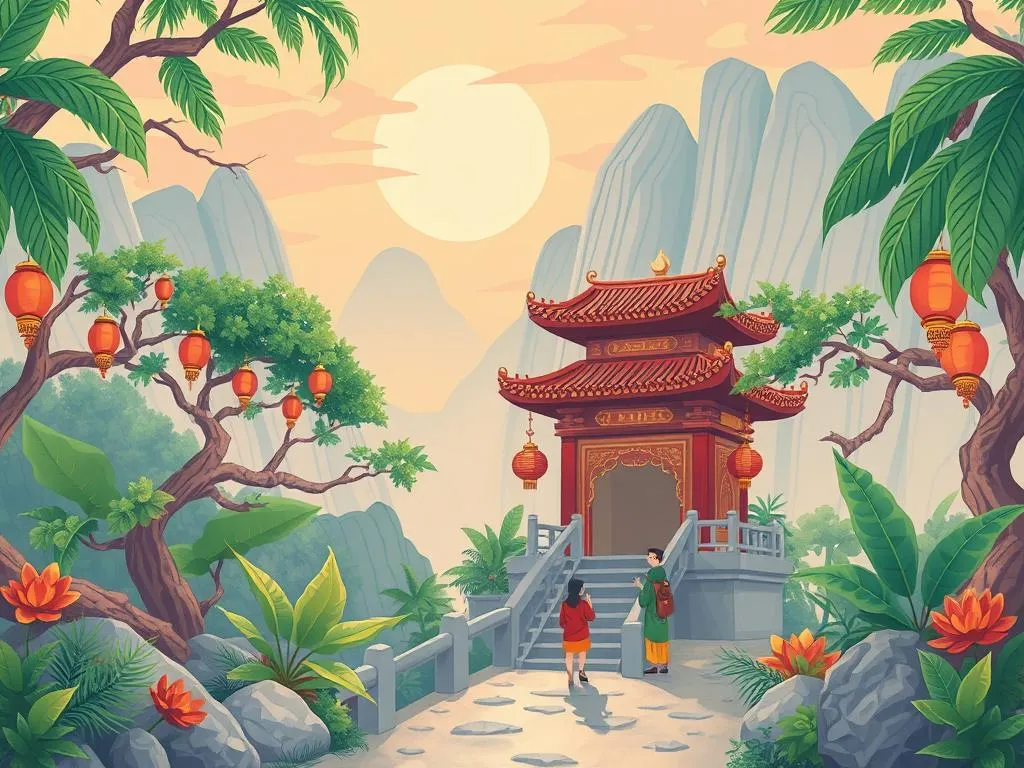Exploring the Sacred Journey: A Cultural and Spiritual Odyssey
When visiting China, many travelers seek to understand the spiritual meaning behind its ancient traditions and practices. China’s rich spiritual tapestry is woven from threads of Confucianism, Taoism, and Buddhism, offering a deep insight into the culture. This journey not only enriches our knowledge but also invites personal reflection and spiritual growth.
Cultural Roots of Spirituality in China
Overview of China’s Rich Spiritual History
China’s spiritual landscape is diverse and profound. Confucianism emphasizes moral values, social harmony, and respect for family. It teaches the importance of relationships and duty, shaping much of Chinese society. Taoism, on the other hand, focuses on living in harmony with the Tao, or the fundamental nature of the universe. It encourages individuals to align their lives with nature and embrace simplicity. Lastly, Buddhism introduced the concepts of mindfulness and compassion, greatly influencing Chinese thought.
Importance of Harmony, Balance, and Unity
At the heart of these spiritual traditions lies the idea of harmony. The Chinese believe in balance not just within oneself but also in relationships with others and the universe. This unity fosters a deep sense of peace and understanding, making it a cornerstone of daily life and spiritual practices.
The Role of Ancestors and Familial Ties
In China, family is central to spiritual beliefs. Ancestor worship is common, where families honor their forebears through rituals and offerings. This practice emphasizes the importance of lineage and the belief that ancestors continue to influence the lives of their descendants. Such rituals create strong familial ties and a sense of belonging, connecting individuals to their past.

Sacred Sites: Pilgrimages and Their Influence
Description of Significant Spiritual Destinations
China is home to numerous sacred sites that hold immense spiritual significance. Temples, monasteries, and holy mountains attract pilgrims and tourists alike. Notable places include the Shaolin Temple, known for its martial arts and meditation practices, and Wutai Mountain, revered in Buddhism. Each site offers a unique atmosphere for spiritual reflection and growth.
The Transformative Experience of Visiting Sacred Sites
Visiting these sacred sites can be a transformative experience. Many travelers find that the serene environments encourage deep personal reflection. The act of pilgrimage allows individuals to step away from their daily lives and connect with something greater. Whether through meditation in a temple or hiking a holy mountain, these experiences can lead to profound insights and a renewed sense of purpose.
Guided Tours vs. Solo Exploration
When exploring spiritual sites, both guided tours and solo exploration provide valuable perspectives. Guided tours often offer historical context and spiritual significance, enriching the experience. However, solo exploration allows for personal reflection and a deeper connection to the surroundings. Each method has its benefits, and travelers can choose based on their preferences.
Rituals and Practices: Immersing in Spiritual Life
Everyday Spiritual Practices Observed in Chinese Culture
Spirituality in China is not confined to sacred sites; it permeates daily life. Practices such as tea ceremonies and meditation are common. The tea ceremony embodies mindfulness, encouraging participants to appreciate each moment. Meditation, often rooted in Buddhist traditions, helps individuals cultivate inner peace and clarity.
The Impact of Community Rituals on Spiritual Well-Being
Community rituals, such as festivals and ceremonies, play a vital role in enhancing spiritual well-being. These events allow individuals to come together, share experiences, and celebrate their culture. Festivals like the Mid-Autumn Festival foster a sense of belonging and connection, reinforcing community ties and spiritual beliefs.
Engaging with Local Monks or Spiritual Leaders
For travelers seeking a deeper understanding of Chinese spirituality, engaging with local monks or spiritual leaders can be enlightening. These individuals often share profound wisdom and practices that have been passed down through generations. This interaction not only broadens one’s perspective but also enriches the spiritual journey.
Nature as a Spiritual Canvas: The Influence of Natural Landscapes
The Connection Between Chinese Spirituality and Natural Beauty
Nature holds a special place in Chinese spirituality. Mountains, rivers, and gardens are not just beautiful landscapes; they are seen as spiritual symbols. The natural world is viewed as a reflection of the inner self, emphasizing the interconnectedness of all living things.
Exploring the Concept of ‘Feng Shui’
Feng Shui is a practice that illustrates the relationship between humans and nature. It involves arranging spaces to create harmony and balance, promoting well-being. The principles of feng shui can be seen in traditional Chinese architecture and garden design, where natural elements are integrated to enhance spiritual energy.
Case Studies of Famous Landscapes
Several landscapes in China hold significant spiritual meaning. Mount Huangshan is famous for its breathtaking views and is often associated with Taoist philosophy. The Yangtze River, the longest river in Asia, has been a source of life and inspiration for centuries. These landscapes invite travelers to explore their beauty while offering opportunities for spiritual reflection.
Symbolism in Chinese Spirituality: A Comparative Table
| Symbol | Meaning |
|---|---|
| Yin Yang | Balance and Duality |
| Lotus Flower | Spiritual Enlightenment and Rebirth |
| Dragon | Power and Auspiciousness |
| Chinese Knot | Interconnectedness and Eternity |
Reflections on Symbols in Daily Life
These symbols are not just abstract concepts; they are woven into the fabric of daily life in China. For instance, the Yin Yang represents balance, reminding individuals to seek harmony in their lives. The lotus flower symbolizes spiritual growth, reflecting the journey from ignorance to enlightenment. Observing these symbols in everyday life can deepen one’s understanding of Chinese spirituality.
Personal Transformation: Reflections on the Spiritual Journey
Encouraging Reflection on Personal Experiences
As we explore the spiritual meaning of visiting China, it is essential to reflect on our own experiences. Many travelers find that their journeys lead to moments of insight or connection. These experiences can be transformative, encouraging individuals to reconsider their beliefs and values.
Collecting Personal Stories
Sharing personal stories can illuminate the impact of Chinese spirituality on individuals. Whether it’s a moment of clarity during meditation or a sense of peace while visiting a sacred site, these testimonials highlight the profound connections people can make with spirituality in China.
Integrating Lessons from Chinese Spiritual Traditions
The lessons learned from Chinese spiritual traditions can enrich our lives, regardless of our beliefs. Here are some ways to integrate these teachings:
- Practice Mindfulness: Engage in daily meditation or mindfulness practices.
- Honor Ancestry: Reflect on your family history and values.
- Connect with Nature: Spend time outdoors and appreciate the beauty around you.
- Foster Harmony: Strive for balance in relationships and daily activities.
By embracing these practices, we can cultivate a deeper sense of spirituality in our lives.
Conclusion
Visiting China offers a unique opportunity to explore the spiritual meaning embedded in its culture and traditions. From its rich spiritual history to the sacred sites and everyday rituals, there is much to discover. By immersing ourselves in these experiences, we can gain valuable insights into ourselves and the world around us. The journey through Chinese spirituality is not just for travelers; it invites everyone to reflect, connect, and grow.
